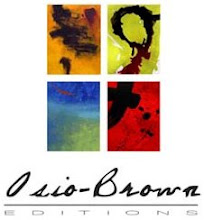(Brought to you by our friend, Mary Ann Cleary, at Art Business Advice)
| Recently, I read an article by Kerris Harris about self-marketing from a corporate perspective. I began to realize that many mainstream business marketing strategies can easily apply to artists as well. In her article, The Art of Self-Marketing, Harris explained four effective marketing strategies: Branding, SWOT Analysis, The Elevator Speech, and Coaching. Here’s how artists can make use of each of these marketing techniques. Branding & Image BuildingIt’s always important to set yourself apart from the competition. What makes your art better than other artists? Why should customers want to do business with you rather than them? Here is a story that illustrates how to brand yourself distinctively: “Recently I purchased canvas from Signature Canvas because they had been recommended to me by someone at a recent workshop that I attended. I placed my order online for a roll of primed cotton canvas, received my order safely, and about a week after my shipment arrived, a handwritten card arrived in the mail thanking me for my order. A couple days later I received a phone call from Signature Canvas, during which they thanked me again and asked if the canvas had arrived safely. Finally, a week ago, I received another courtesy call asking me how the canvas was working out and making sure that I had no issues with the quality of their product. I have never received such service or follow-up from any other art supplier that I have ordered from in the past. Will I order from them again? Yes. Why? Because they distinguished their brand from other art suppliers.” So as an artist, how can you distinguish yourself? When someone purchases a painting from you, include a thank you note along with a business cards. You could also add a coupon for a discount on their next purchase or a “freebie” such as small print of your work. This is merely one idea, but it’s something that many artists do not do. Having a product that fulfills the customer’s needs is just a part of the puzzle. You also want them to think of you first. The business world would call that successful branding. SWOT AnalysisWhat does SWOT stand for? Strengths, Weaknesses, Opportunities and Threats. Businesses regularly make lists of each of these to try to improve earnings and sales. Artists can do the same. Try making a list of your own based on the following ideas: 1) Strengths As an artist, in what areas do your skills shine? How can you capitalize on your strengths? Find someone you trust to give you honest feedback about what you do well. Then come up with a marketing plan that highlights your best abilities. 2) Weaknesses Where do you need to improve? Identify your shortcomings and come up with a plan to fix them. For artists, this could mean taking a workshop, reading books, or watching DVDs available for art techniques. Your weakness might not be art-based, however. Perhaps it’s the business side of the profession that you’re weakest in. Either way, knowing your weaknesses is half the battle. Fixing it is the other half. 3) Opportunities Always be on the lookout for new opportunities to display your art, connect with your target clients, expand your offerings or network with other artists. 4) Threats What roadblocks are in your way as an artist? What can you do about them? Threats are something that you may have no control over (unlike weaknesses, which you can improve upon). By making changes in how you market yourself, however, some threats may disappear. The 30-Second Elevator SpeechEvery time a person meets someone new, they usually have a few seconds to sell themselves and make an impression. If someone says to you, “I am an artist” with little enthusiasm or passion, would you be interested in them or their art? If they’re not, why should you be? Learn to sell yourself as an artist. Prepare a 30-Second commercial on you and your art. Say it with passion. Practice it. Tell people what you are working on and why you are interested in it. When giving your “commercial,” have a business card ready to hand out. The most important thing is to make a positive impression so that people will remember you. Coaching & MentoringA true professional is always teaching others what they know. By teaching others, you gain insight into yourself and your own process and you stay current with the issues that matter in your field. Mentoring can be accomplished by giving classes or volunteering at the local grade school or high school. Teaching art at your local continuing education group is another way. This is an excellent way of sharing your knowledge with others as well as developing a market for your art in the surrounding community. Reposted By: Adam Brown |
